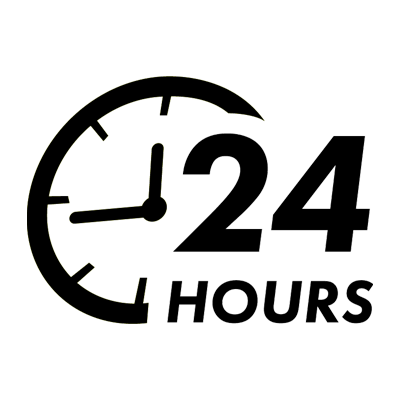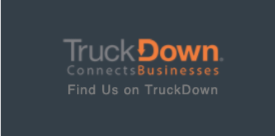Maintaining a fleet of commercial vehicles involves careful attention to detail, especially when it comes to staying compliant with the Department of Transportation (DOT). Regular DOT inspections are essential to fleet management, directly influencing safety, operational efficiency, and legal compliance. To help fleet managers navigate the complexities of DOT inspections, we’ve outlined key aspects you need to know to ensure your fleet remains compliant, safe, and operational.
Understanding DOT Inspections
DOT inspections are critical evaluations certified inspectors conduct to ensure that commercial vehicles and drivers adhere to the Federal Motor Carrier Safety Regulations (FMCSR). These inspections aim to reduce accidents, promote safety, and maintain operational standards on highways nationwide.
Inspections are categorized into several levels:
- Level 1 – Full Inspection: Comprehensive check of driver credentials, vehicle safety features, and documentation.
- Level 2 – Walk–Around Inspection: Focuses on vehicle condition and driver credentials.
- Level 3 – Driver-Only Inspection: Includes check of licenses, medical certifications, logs, and hours of service.
Understanding these levels and preparing accordingly can significantly improve your fleet’s compliance record.
Most Common Violations and How to Prevent Them
1. Brake System Issues Brakes are among the most frequently cited violations. Inspectors pay close attention to worn brake pads, leaks, and maladjusted brakes.
Preventive Measure:
- Regularly schedule brake maintenance.
- Conduct pre-trip brake inspections daily.
- Train your drivers to recognize early signs of brake wear or failure.
2. Tire Violations Underinflated tires, tread depth below minimum requirements, and visible damage are common issues. Regularly scheduled inspections by drivers before and after trips, coupled with routine maintenance, can mitigate these violations.
3. Lights and Reflectors Inoperable or improperly functioning lighting systems frequently result in violations. Pre-trip inspections should include checks for headlamps, turn signals, brake lights, and marker lights.
4. Hours of Service Violations Non-compliance with hours-of-service (HOS) regulations is another common issue. Ensuring accurate recordkeeping, utilizing Electronic Logging Devices (ELDs), and thorough driver training are essential in avoiding these infractions.
Preparing for DOT Inspections
A proactive approach to DOT compliance involves implementing comprehensive strategies to ensure vehicles and drivers remain prepared:
1. Establish Clear Policies and Procedures Develop and communicate policies for pre-trip and post-trip inspections. Include detailed checklists that drivers must complete and submit regularly.
2. Regular Maintenance Schedules Routine preventive maintenance significantly reduces the risk of unexpected violations. A consistent maintenance schedule ensures potential issues are identified and rectified before becoming violations.
3. Training and Education Regularly train drivers on compliance regulations, proper inspection techniques, and documentation requirements. This helps reduce errors and enhances their confidence during inspections.
Documentation – What Inspectors Look For
During inspections, proper documentation is crucial. Ensure your drivers always have the following:
- Valid Commercial Driver’s License (CDL)
- Vehicle registration and insurance documents
- Inspection reports (pre and post-trip)
- Driver logs
- Medical certificate
Consistent documentation helps inspections go smoothly and reflects positively on your fleet management practices.
Handling Roadside Inspections
Training drivers on the inspection process reduces stress and promotes positive interactions with DOT inspectors. Encourage your team to:
- Remain professional and cooperative.
- Present required documents clearly and confidently.
- Be transparent if there are issues or concerns.
Positive interactions often lead to smoother inspections and better outcomes.
Technology as a Compliance Tool
Leveraging technology can streamline compliance efforts and simplify fleet management. Tools such as fleet management software, telematics systems, and digital inspection applications help:
- Monitor vehicle maintenance schedules.
- Track driver compliance with inspection routines.
- Automate reminders for vehicle service intervals.
- Digitize inspection records, reducing paperwork and improving accuracy.
The Cost of Non-Compliance
Non-compliance with DOT regulations can be expensive, resulting in:
- Fines and penalties
- Increased insurance rates
- Potential loss of business due to negative safety ratings
- Operational disruptions from vehicles being placed out-of-service
Investing in compliance pays off by avoiding these costly consequences and enhancing overall fleet efficiency.
Best Practices for Ongoing Compliance
Maintaining consistent DOT compliance involves ongoing efforts:
- Regular internal audits: Periodically review driver logs, vehicle inspection reports, and maintenance records.
- Continuous training and reinforcement: Regular training sessions reinforce compliance importance and help employees stay updated on new regulations.
- Creating a culture of safety: Encourage open communication, reward proactive compliance behaviors, and address issues promptly and constructively.
How Fast Fleet Can Help
At Fast Fleet, we specialize in supporting fleets with compliance through comprehensive DOT inspection preparation, roadside assistance, and ongoing maintenance services. Our expert technicians ensure your vehicles meet regulatory standards and remain road-ready at all times.
By understanding and implementing these practices, your fleet can significantly improve its compliance performance, reduce inspection-related stress, and achieve operational excellence. Get ahead of DOT inspections—partner with Fast Fleet to keep your vehicles safe on the road.
Stay compliant, safe, and successful with Fast Fleet. Contact us today to learn more about our comprehensive fleet management and roadside assistance solutions.
















